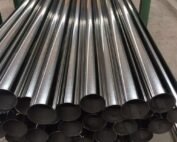February 1, 2023
Market Share of Turkey’s Iron and Steel Exports
All iron and steel companies operating in Turkey are privately owned. Turkey aims to improve its position in the global market for iron and steel manufacturing company exports in the long term. To this end, it constantly follows technological developments in the field of iron and steel.
Turkey produces crude steel equivalent to 15% of global crude steel production. The European Union produced 173 million tons of crude steel in 2010. Iron and steel exports are of great importance worldwide. The country that produces the most iron and steel in the world is known as China. India has become the second-largest steel producer in the world. It is seen that a very large part of the crude steel production in the world is produced in Asia. After Asia, the largest share in the world belongs to Europe with 14.60%. However, 2% of this figure belongs to Turkey.
After 2010, the market share of all European countries in world crude steel manufacturing reached 14.6%. Turkey has become the second largest crude steel manufactures in Europe after Germany with a market share of 2.1%.
As a result of the 2009 crisis, Germany suffered a production contraction of approximately 11 million tons. In 2010, production fell below the pre-crisis levels. However, iron and steel production and exports continued at full speed. In Turkey, a production contraction of approximately 1.5 million tons was observed during the crisis period. However, it recovered immediately in early 2010 and increased its production by approximately 3.5 million tons compared to 2007. Among European countries, Italy was the second largest steel producer after Turkey with a 1.8% share in 2010.
Iron and Steel Production in Turkey
The iron and steel manufacturers provides raw materials to industrial areas both globally and nationally. The products processed in iron and steel plants serve as the basic materials needed in industrial branches. In Turkey Steel and iron manufacturing takes place in facilities supported by new-generation technologies. The activities of companies are subject to comprehensive inspections.
In addition to technological elements, many factors are involved in the production process, including employment, waste management and logistics. At the same time, all production by iron and steel enterprises plays a role in stimulating trade and the economy.
Countries to which Turkey Exports Iron and Steel
According to World Steel Association data, Turkey ranks 8th in the world in iron and steel production. However, despite these data, it is not among the top 10 countries in iron and steel exports. China ranks first in iron-steel production and iron-steel sector exports. However, from an export perspective, the performances of Japan, Germany, South Korea, the USA and Russia have improved considerably. Germany is the largest importer country in iron and steel production.
Germany requires a high level of iron and steel raw materials and intermediate products for its manufacturing industry. Although among the top 10 exporters in the world, there are also countries that are not among the top 10 importers. These are the UK, Mexico, Thailand and Vietnam. These countries have become important markets for exporters. Countries, where Turkey’s market share is low, should be target countries for exporters.
Turkey’s Iron and Steel Imports
Imports of iron and steel products in Turkey started to maintain its rapid upward trend in 2015. By the end of 2015, Turkey’s total steel imports had increased by 38.1% in terms of quantity. The margin between scrap prices and finished steel prices narrowed. As a result, some countries, notably China and Russia, received government support for their excess steel production. With the state’s contribution, it was seen that they turned to export markets at dumped prices below their costs.
By the end of 2015, Turkey’s imports of semi-finished products had increased by 65%. With 7.89 million tons, it reached the highest level of its period. In 2015, around 19 million tons of Turkey’s crude steel production capacity could not be utilized. Around 7.9 million tons of semi-products used in production were met through imports.
Iron and Steel Industry in the World
The iron and steel industry starts with the extraction of iron ore from the ground. It starts with its concentration and continues with the production of iron and steel by various methods. It is a type of sector that produces iron and steel by casting, rolling, forging, drawing, and similar ways. The first iron and steel industry establishment works in Turkey started in 1925 at the Directorate of Military Factories in Kırıkkale. In this factory, all kinds of tool steel, machine construction steel, and a small amount of rebar were started to be produced.
As in many other branches of industry, the basic infrastructure of the iron and steel industry emerged in this period. After World War I and the War of Independence, there was a dire need for a national iron and steel industry. As a result, the structural foundation of the iron and steel industry in Turkey was laid. On March 26, 1926, “Law No. 786 on the Establishment of Iron Industry” was published in the Official Gazette.
One of the most important proofs of the development of the world countries is the amount of iron and steel consumed per capita. The iron and steel industry experienced great developments in Turkey until the 90s. In 1998, Turkey ranked 16th in iron and steel production in the world. However, iron and steel consumption per capita was 196 kg on the same date. In OECD countries, this figure was 420 kg per capita. Turkey has shown great development by increasing its iron and steel production to 14 million tons in 1999.
Turkey’s Iron and Steel Industry Capacity
In 2015, it increased by 0.5%, which is quite low compared to recent years. Turkey’s crude steel production capacity increased from 50.2 million tons to 50.4 million tons. The share of electric furnace plants in total capacities reached 77%. Although the increase in capacity continued, albeit limited, production declined. Therefore, the rate of capacity utilization continued to slow down.
According to data from the World Steel Association, capacity utilization fell from 73.4% in 2014 to 69.7% in 2015. The Turkish steel industry’s capacity utilization rate, on the other hand, declined from 67.8% to 62.5%. It remained 7 percentage points lower than the world average. In 2015, the capacity utilization rate of electric arc furnace plants declined from 61% to 53%. Thus, the plant capacity utilization rate increased from 89% to 94% thanks to the competitive advantage provided by iron ore.
How Many Iron and Steel Factories Are There in Turkey?
In 2017, iron and steel production worldwide increased by 5.3% compared to 2016. However, it increased to 1 billion 691 million tons. Turkey’s iron and steel production increased by 13.1% in 2017, reaching 37.5 billion tons.
In 1996, an agreement was signed between the European Union and Turkey. Under the European Coal and Steel Community agreement, customs duties on steel trade were mutually abolished. The agreement allowed the trade of iron and steel products to EU member states without customs duties. At the same time, according to the provisions of the ECSC agreement, the state cannot provide incentives to the steel industry.
Turkish iron and steel manufacturers want to consolidate the industry’s position in the global market in the long term. To this end, they continuously follow technological developments. The iron and steel industry in Turkey has become the fourth largest contributor to the Turkish economy. There are 24 arc furnaces, 5 induction furnaces, and 3 oxygen furnaces in Turkey.


















